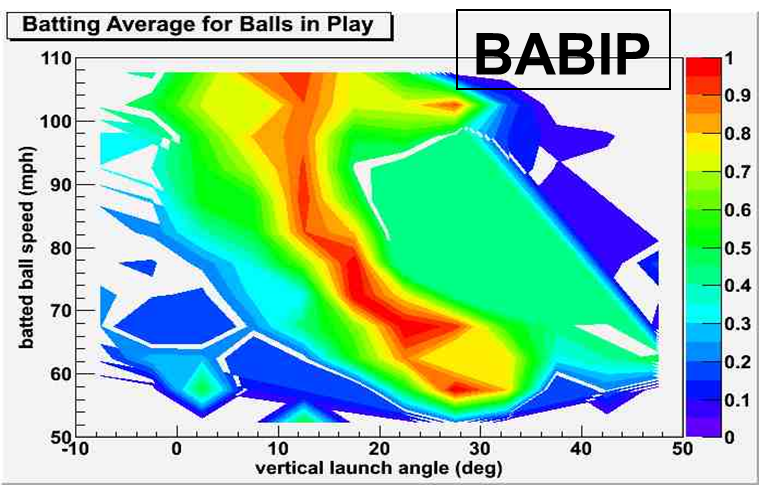The way a bat helps get our player on base can be very complicated (as proved by the endless options of bats), but let us first agree that we are looking for a bat that can help our player hit the ball with more consistency and more power.
And before we get too far, let's not give too much credit to the bat. Bats can only do so much for our game and changing bats on a player (especially mid-season) isn't a decision that should be taken lightly. (The decision to change bats discussed further in the blog posts). A bat CAN control two things. Assuming all other things are held constant, those two are, first, how much energy it transfers to the ball at contact and, second, how easily it allows for our player to make that contact.
In this fantastic chart to your right, Dr. Alan Nathan from the University of Illinois, we see that the speed of a batted ball and the angle at which it's hit determines the success of a batter. The right bat allows a hitter to not only hit the ball with a maximum amount of ball exit speed, but also the correct trajectory. In our quest for a bat these two parameters will be our guideposts.
Next: Step # 1: Choosing a Legal Bat
Previous: How To Choose A Baseball Bat: A Dad's Guide
Next: Step # 1: Choosing a Legal Bat
Previous: How To Choose A Baseball Bat: A Dad's Guide

No comments:
Post a Comment